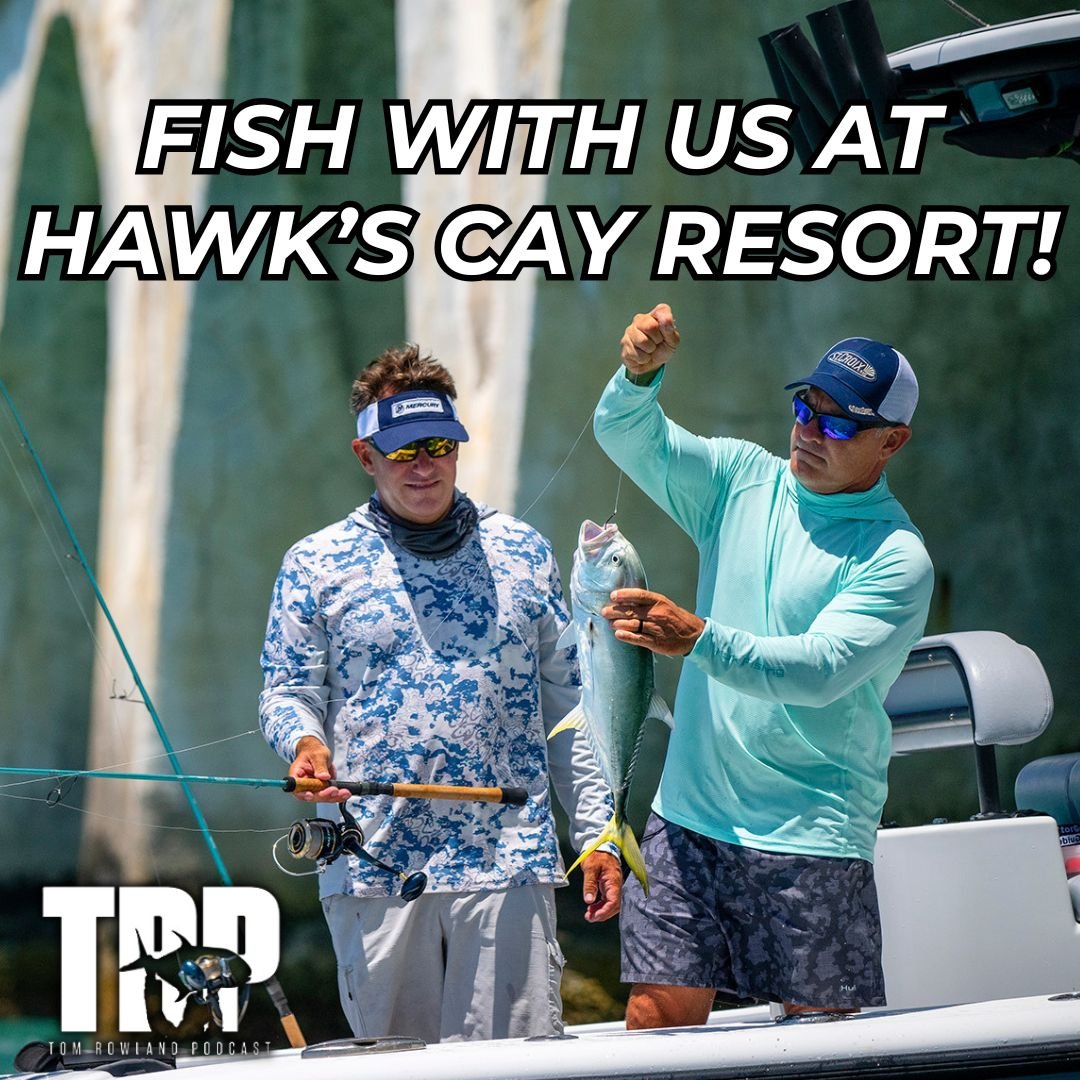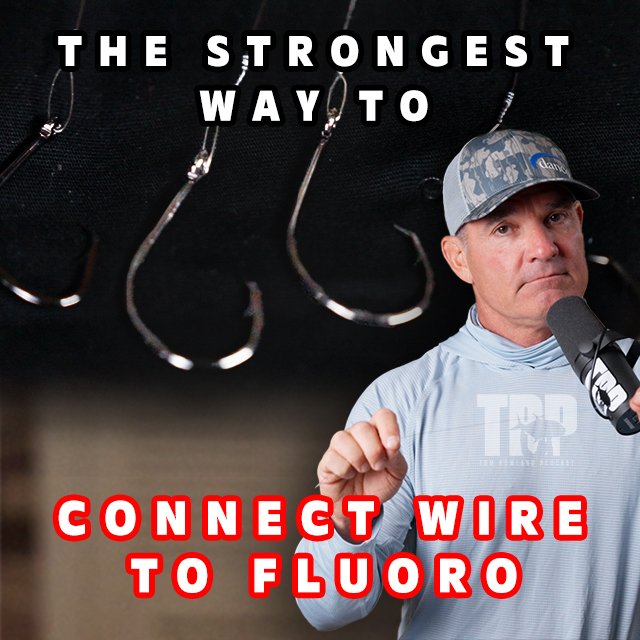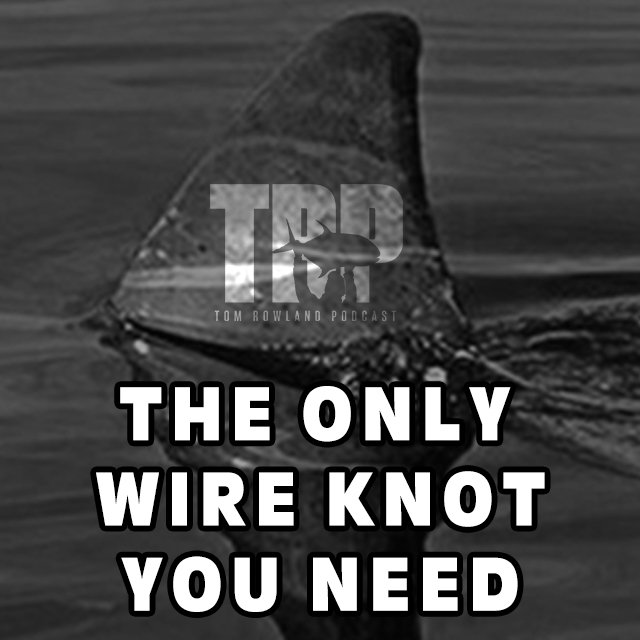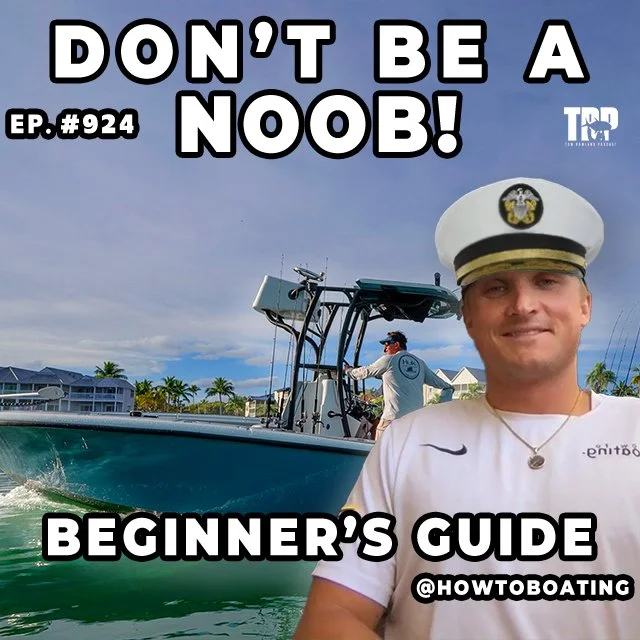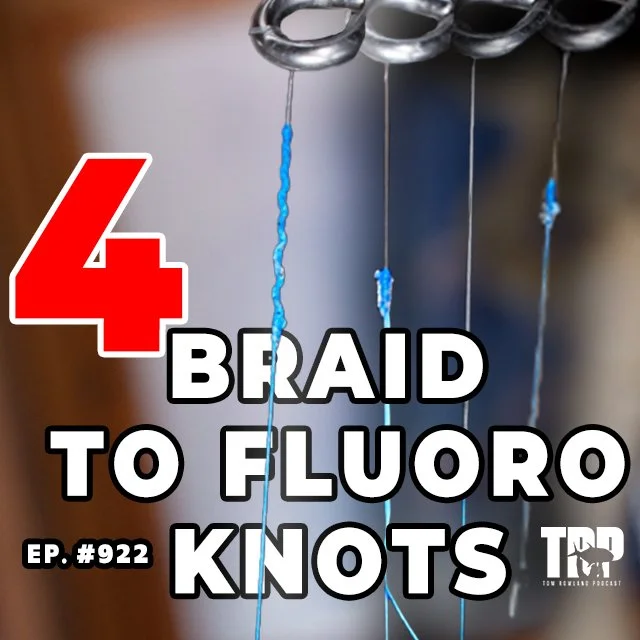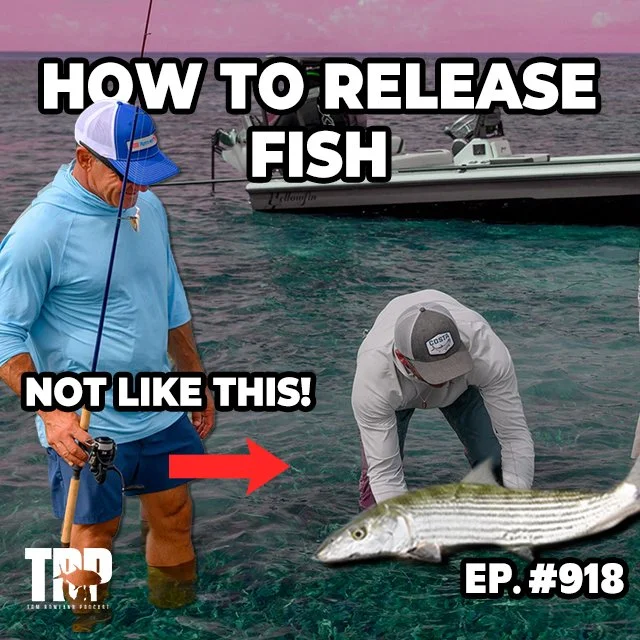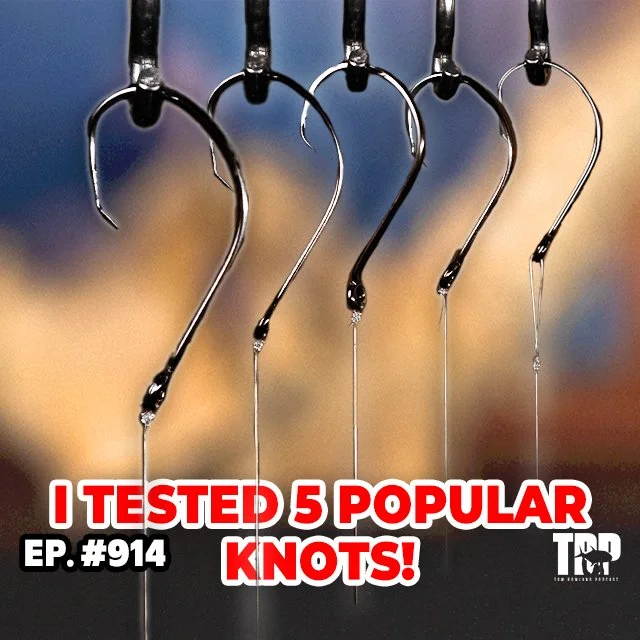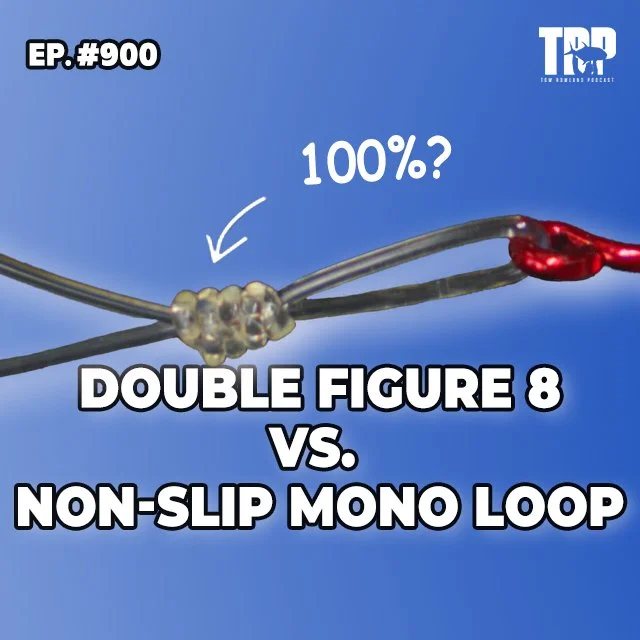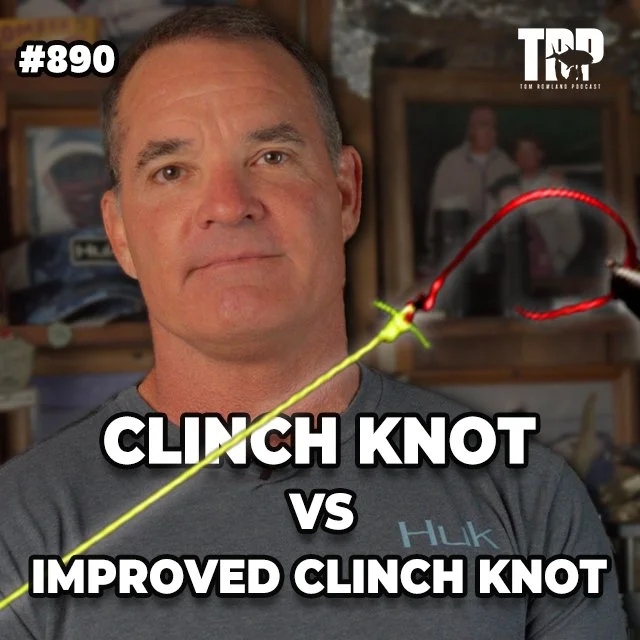Permit Fishing 101 - Spinning Tackle And Techniques
TOM ROWLAND PODCAST - How To Catch A Permit
LISTEN NOW ON ITUNES, PODCASTS, SOUNDCLOUD, SPOTIFY, OR STITCHER!
“Permit is by far my favorite fish.”
PODCAST SYNOPSIS
There are many ways and methods that we can use to catch permit. In order to be successful in catching permit under all conditions anglers need to have mastered many skills with different types of tackle. I find that a fly rod and a spinning rod will cover most conditions but anglers who enjoy baitcasters can also have success.
Spinning Tackle
If an angler wants to maximize his chances at permit, the spinning rod is unquestionably the most useful tool available. The spinning rod allows anglers to cast small and large crabs, light artificial lures and jigs and live shrimp in every condition. In the Florida Keys, we experience seasonal changes that require me to alter my spinning tackle to optimize the conditions. For example, winter and spring conditions are often windy; a condition that allows guides to get very close to the fish before they become alarmed. The rough conditions camouflage anglers and boats contrary to the extreme calm.
Spinning Rods
It is in the windy conditions that I use a 7 foot medium action spinning rod designed for 8-17 pound line or 12-20 pound line to throw crabs that measure 2-3 inches across the carapace. The rod needs to have enough backbone to fight and land a fish over 30 pounds yet have a tip sensitive enough and light enough to be able to present these baits accurately and precisely in the windy conditions. Casting distance is not the most important aspect of the setup at this time of year so I choose a rod that I am comfortable casting and that can whip a large fish easily.
As the season wears on into the early summer, I find that the conditions often become calmer or at least we experience more calm days. As a general rule of thumb, the calmer the conditions, the spookier the fish will be, therefore the longer the cast will have to be to have success. In order to cast farther, anglers can simply change a few things in their tackle to easily add 10-50 feet in their cast. A rod that measure 7 1/2 feet and that employs a lighter and more responsive tip will out cast a 7 foot rod with the same line and lure. As the season becomes calmer and the fish become more wary, I go to a 7 1/2 foot medium action rod designed for 6-12 pound line. The extra length and whippy tip will also throw lighter crabs successfully which is often necessary to present the bait to the fish without alarming it. Crabs choice this time of year is often a crab measuring 2-2 1/2 inches across the carapace.
The Florida Keys weather in the summer is often dead calm. The ocean can be as calm as a mill pond making sneaking up on permit tough, however summer is also the time when permit are the most available. In order to take advantage of the calm conditions, I go even farther in changing my tackle and move to 8 foot medium light action for 4-8 pound line. These rods will cast an even smaller crab a country mile. I routinely use the smallest crabs I can throw which might measure from 1-2 inches across the carapace. On the smallest crabs, a split shot is often necessary. Fighting a fish on a noodle rod like the one mentioned is much like fighting a fish on a fly rod. If you have never fought a fish on a fly rod, it is very important to keep the bend in the rod at a minimum by avoiding a situation known as “high sticking”. Keeping the tip of the rod pointed directly at the fish creates a slight bend in the rod, resulting in more power and better control over the fish. Pointing the butt of the rod towards the fish results in way too much bend in the rod, lack of control over the fish, very little pressure on the fish and often a broken rod.
Spinning Reels
The reel choice for permit does not necessarily change from season to season. Anglers need a compact reel capable of holding 230-300 yards of 10 pound test monofilament based on the manufacturer’s specifications. These size reels are often categorized as size 40 or 4000 among the tackle manufacturers. The capacity is important but not as important as the drag or ability to withstand the harsh marine conditions. A front drag is standard and rear drag models have been proven repeatedly to fail. The drag should be ceramic and lubricated and checked often before attempting to catch a permit.
The saltwater destroys most spinning reels so choose one from a company dedicated to saltwater fishing. (Personally, I have always liked Quantum reels. The Cabo is all you need for Permit and will not wear out.) The reel should have 6-10 ball bearings and a finish that does not corrode in saltwater. The bail system needs to be well thought out and designed for this environment as well. Bail springs are a poor choice and fail before any other component on a spinning reel. Many manufacturers have moved to magnets as triggers for the bail spring with great success. This system is impervious to saltwater and long-lasting. Other companies remain with the bail spring and their reels are short lived in saltwater.
Line
The line choice definitely varies form season to season. In the past, 10 pound monofilament was standard for most of the year with 12 pound being used in the winter when casting distance is generally shorter and 8 pound being used in the summer when casts have to be longer. There are situations where monofilament is still the best choice but after the revolution of braided lines, those situations for permit fishing are fewer and farther between.
The advantage of braided lines over monofilament is that the diameter of a line of equal pound test is greatly reduced. A braided line of 30 pound test will be the same diameter of 8 pond test monofilament while 8 pound braid has the diameter of 2 pound monofilament. Many situations in permit fishing require that anglers cast as far as they can in order to reach these wary fish. Braided lines will immediately add distance to the cast without making a single change in technique. I like the handling and castability of the 14, 20 and 30 pound braided lines the best for my permit situations. The lines have enough diameter that they will behave like 10 pound monofilament yet have more strength and far greater casting distance than ordinary monofilament.
In the winter I will use 30 pound braid on most of my reels because it casts a long way and due to the abrasion resistance and strength I do not have to change the line very often. I can determine what pound test I want to use to catch the fish with the size of leader that I use. In this way, brained lines are similar to fly fishing. In other words, I can use 30 pound braid as my casting line but use a 10 pound leader to make it more sporting.
As conditions calm down and casts have to be longer, I switch to 14 or 20 pound and then in the summer move again to 8 or 10 pound braided line.
Other advantages that will greatly improve your permit fishing include braided lines ability to be twisted and still perform well. Often beginning anglers and even experienced ones will reel against the drag during the fight resulting in monofilament that is totally unusable after only one fish. Carrying spare spools pre loaded with fresh line became standard but required a lot of preparation time. After a productive day of fishing, the line had to be stripped off and fresh line replaced due to the nicks, abrasion and twists. With braid, the line will still become twisted, however the braided line behaves well and remains fishable no matter how badly it has been twisted.
Leaders
Braided lines have many advantages but also some disadvantages. First and foremost, the line is visible in the water. Tying braid directly to the hook or lure is not a good idea since the fish can easily see it and any fish that is at all leader shy will reject the offering. To overcome this problem, we simply use a leader of fluorocarbon line attached to the braided with a double uni knot. The leader should be between 2 and 4 feet long. The pound test is up to the angler but it can vary from 2-30 pound leader. I like 10 or 12 pound fluorocarbon for a leader the best because I think that it is virtually invisible in the water and allows the bait to swim freely. Fluorocarbon also sinks much faster than monofiliment helping your crab to swim to the bottom.
Baits
Bait choices are easy. Permit will eat anything as long as it is a live crab. All joking aside, that could be considered the truth as it pertains to flats anglers. Permit actually eat a wide variety of things, but most is unavailable at the bait tank or too small to fit on a hook. I like to throw the smallest crab I can, given the conditions. I have seen permit reject crabs that are too large but I have rarely seen one reject a small crab. The most important aspect of a live crab is that it is alive so hook them carefully and as far to the edge of the carapace as possible. I specifically choose crabs that still have their claws rather than the ones with them removed. If you are concerned about getting pinched, it is better to just smash the lower jaw of the pincher with pliers rather than taking off the entire arm of the crab. Crabs with claws look far more natural and I think you get a more aggressive bite. Once hooked, keep the crab in the water at all times so that he will be fresh and active when you toss him in front of the permit of a lifetime. Permit will eat a dead crab on occasion, but often reject them. Live and fresh crabs presented correctly are rarely refused.
Shrimp
Live shrimp are also a good bait choice and responsible for many permit each year. The shrimp has to be large enough to throw the distance required. Many times I will choose a shrimp over a crab in areas where I see both permit and bonefish. Split shot will help throw the baits farther if placed directly above the hook.
Jigs
Jigs are productive and used if bait is not available or if anglers want more of a challenge. Standard 1/4 ounce flat head jigs or wiggle jigs work well. The most productive colors have been yellow and white for me. In calm conditions go to an 1/8 ounce jig. Tipping the jig with a shrimp tail will improve your chances at permit.
Crab/Shrimp imitations
Tackle companies have begun to manufacture soft plastic crabs that are very realistic and can be productive for permit. The problem with these baits is that many of them lack adequate movement to simply cast the lure in front of a fish and wait. The angler has to impart action to the lure to get the bite.
These baits are productively rigged on a 1/8-1/4 oz jig head or rigged weedless on a standard worm hook with a bullet weight pegged to the line directly above the hook.
There have long been fake shrimp available to the angler. DOA is probably the most available. These will catch fish, but I would be hesitant to throw one if live crabs were available. Gulp shrimp on a jig have worked many times when live bait is not available or we ran out. The Gulp has a good scent to it and it seems to work ok for permit, but definitely not as good as a live crab…nowhere close.
Techniques with a spinning rod
Anglers need to master several techniques in order to be successful with permit. First, casting distance needs to be maximized. Casting with one hand on the rod will not suffice. Anglers need to have their top hand at the reel and the bottom hand at the terminal end of the handle. When the cast is made, the top hand will push the rod to the target while the bottom hand pulls the handle to the body. The result is far greater loading ability in the rod and far greater casting distance.
Accuracy is also important and can be accomplished with the same technique. Placing the index finger of the top hand on the rod pointing toward the target as you release the line from the “trigger finger”.
Minimizing the impact of the bait on the water can be accomplished by casting low and hard directly to the target. While the bait is on the way to the target, raise the rod to a 12:00 position and feather the line to minimize impact. With practice, anglers can easily make a live shrimp or live crab land as gently as a fly.
Fighting a Permit
When a permit is first hooked, be ready for a long hard run. Simply keep tension on the fish and the rod bowed deeply. Be ready for that fish to quickly and suddenly turn around and run back at you. Collect the line as quickly as possible and then keep tension on the fish throughout the fight. I do not recommend pulling exceptionally hard or keeping a heavy drag setting because permit are a fish that will fight only as hard as they are being fought. In other words, when you pull very hard, the permit pulls very hard back. Pulling gently but firmly throughout the fish will cause the fish to run longer and more often which will shorten the fight and help you land more fish.
This episode is brought to you by these great sponsors:
Barracuda Tackle - Makers of the best cast nets on the market BarracudaTackle.com
Empire Boat Covers - Protect All The Things You Love - empirecovers.com/TRP
Boat Hammock Stands - Comfortable Boating Awaits - boathammockstand.com
This episode has been brought to you by Waypoint TV. Waypoint is the ultimate outdoor network featuring streaming of full-length fishing and hunting television shows, short films and instructional content, a social media network, Podcast Network. Waypoint is available on Roku, Samsung Smart TV, Amazon Fire TV, Apple TV, Chromecast, Android TV, IoS devices, Android Devices and at www.waypointtv.com all for FREE! Join the Waypoint Army by following them on Instagram at the following accounts
@waypointtv @waypointfish @waypointsalt @waypointboating @waypointhunt @waypointoutdoorcollective
Find over 150 full episodes of Saltwater Experience on Waypoint
You can follow Tom Rowland on Instagram @tom_rowland and find all episodes and show notes at
Learn more about Tom's Television shows by visiting their websites:
Contact Tom through email: Podcast@saltwaterexperience.com
See you on the water,
Tom Rowland




